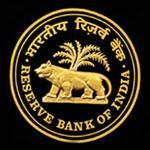Concerned about the rupee's fall to a record low, the Reserve Bank has discreetly phoned trading desks with unusually explicit messages to cut their speculative positions in the currency, said three senior market participants with direct knowledge of such calls.
While the Reserve Bank of India (RBI) regularly monitors positions and flows in the currency market, the sources said it was unusual for the RBI to call so often or state so explicitly that banks should cut their intraday net open position limits - or their outstanding positions in futures and forwards markets.
A bank's net open position is its aggregate exposure to foreign exchange risk.
The pressure highlights the limited options for a central bank that has seen the rupee hit hard in last month's emerging markets rout, but is reluctant to sell too much of its US dollar foreign reserves given they are enough to cover only seven months of imports.
While the RBI has succeeded in curbing speculation in India's roughly $8-9 billion currency futures and forwards markets, it also runs the risk of choking off liquidity and creating volatility, making it harder for banks to manage genuine client currency needs.
It could also drive further currency trading to offshore markets such as Singapore via non-deliverable forwards, beyond the RBI's reach. Non-deliverable forwards are a derivative instrument that allow investors to speculate on a currency's movement without having to hold the currency.
"You are in this new environment where they say jump and you say how high. You don't take them on," a senior official at a large bank told Reuters.
The RBI did not have any immediate comment.
June swoon
The sources, none of whom wanted to be identified discussing private conversations with the RBI, said the calls became more frequent around the second week of June, when the rupee started its steep descent that culminated in a record low of 60.76 against the dollar on June 26.
The decline was sparked by fears of an early end to the U.S. stimulus measures that hit most currencies, but the rupee was among the worst performers as the country's current account deficit hit a record high of 4.8 percent of gross domestic product in the fiscal year ended in March.
The RBI has called as often as 10 times a day, according to one of the sources, from around a couple of times a trading session during normal days. At times, the calls have gone beyond queries on flows and positions.
"There were a couple of days they did more than that. They said 'cut your positions'," one of the sources said.
India does not have data on net open positions, but multiple traders have told Reuters that banks had reduced their net open positions as a result of the RBI's requests.
In prodding banks to cut their speculative trading, the RBI is likely to be aiming to make its thus-far mild interventions more effective, traders said. With less liquidity, any dollar sale by the central bank would have a bigger market impact. Fewer open positions also make it harder to short the rupee.
The covert supervision of currencies reflects the RBI's longstanding caution when it comes to explicitly imposing measures. The last time it imposed outright curbs on net open positions was during a rupee plunge in late 2011.
Late in June, after stepping up its monitoring, the RBI mandated foreign banks limit themselves to placing hedging-related trades on onshore forward markets on behalf of overseas clients and not use existing client positions to make other trades, such as for proprietary trading.
The RBI's active management of currency markets comes as offshore trading of rupee forwards, especially in Singapore, is on the rise.
Daily average turnover in the offshore non-deliverable forward markets is estimated to have grown to between $4-$4.5 billion, according to HSBC's 2013 Emerging Market Currency Guide, higher than its estimate of India's onshore forwards volumes of $3 billion.
Futures, which trade on exchanges, reach around $5-6 billion average daily.
"Some people will obviously find it easier to go to the NDF market rather than deal with the constraints here. So in some sense you drive away business from onshore to offshore," said one of the sources.






